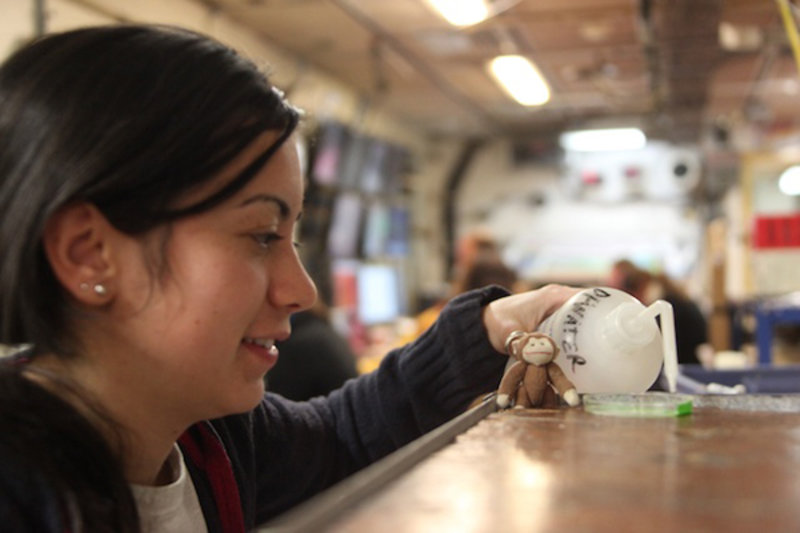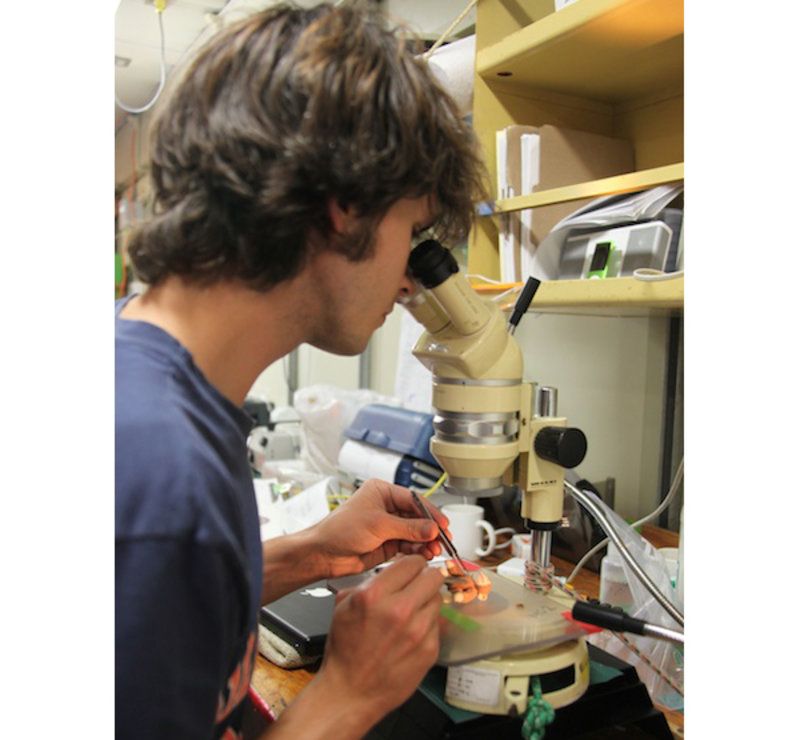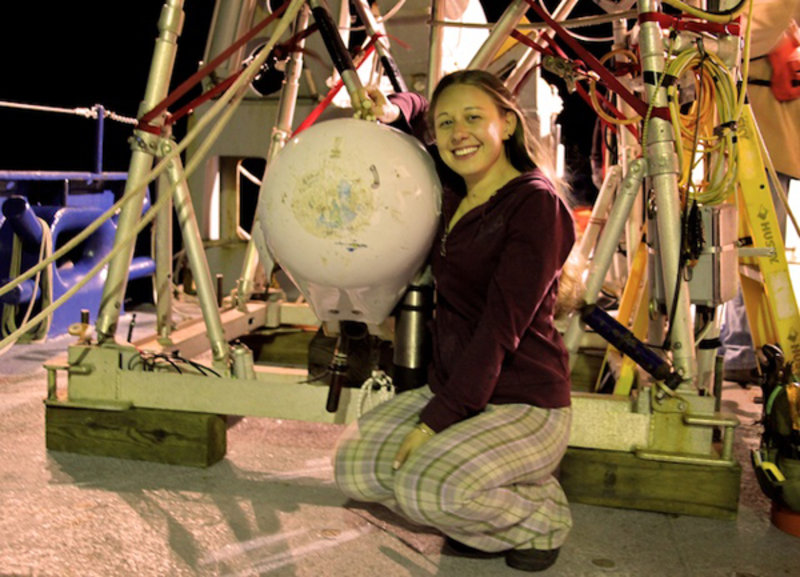
By Monica Heintz, University of California – Santa Barbara
March 6, 2010

Stephanie Mendes shows Harold the monkey around the lab. Image courtesy of INSPIRE: Chile Margin 2010. Download image (jpg, 61 KB).
Hello out there! Harold (the adventure monkey) here. I am Monica Heintz' travel companion. She has been out in the special radioactive isotope laboratory a lot, and sleeping some pretty odd hours. I have been pretty bored sitting in my bunk (i.e., Monica’s glasses case), so I decided to take a trip around the ship and see what has been going on. The seas are pretty rough today, and I got thrown around trying to make my way down the hall.
As I went flying down the stairs, I started thinking that maybe venturing out on my own wasn’t such a good idea. It’s hard being 2 inches tall on a 279-foot ship! Luckily, my good pal Stephanie Mendes found me, brought me to the main lab, and showed me around.

Ben Grupe shows Harold how the worms are able to feel. Image courtesy of INSPIRE: Chile Margin 2010. Download image (jpg, 90 KB).
Wow! There was a lot going on in there! So many computer screens monitoring the instruments that are constantly going overboard, and students at microscopes checking out the little worms they find in the mud. Ben Grupe let me look in his microscope at the different types of worms they found today. They all have exotic names, and strange body parts to help them stay in their seafloor burrows and scrounge around for food. I had no idea that there were so many types of millimeter scale worms living in the sediment, or that specialists like Ben and the other students here could learn so much from them!
After nearly a week of searching for signals of hydrothermal vents in the water column, Dr. Chris German tells me that we seem to be zeroing in on the source. He seems very hopeful, and is the expert in these things, so I am hopeful too. I tried to go visit Monica in the special radioactivity lab, but Jim (the science technician) says that no one (not even an adorable monkey) is allowed in there, because it would mess up future experiments if radioisotopes are tracked around the ship. So, I continued my adventure by visiting the autonomous benthic explorer, ABE. I had been looking forward to meeting this robot, after meeting his little brother Sentry back in September.

Monica Heintz and Harold the monkey visit ABE. Image courtesy of INSPIRE: Chile Margin 2010. Download image (jpg, 131 KB).
ABE’s first launch of the cruise happened around midnight last night. Unfortunately, ABE self-aborted the dive very early on because it had a computer malfunction and couldn’t detect its depth. I guess I can understand, though. I sure wouldn’t want to be down in the dark and cold ocean all alone with a malfunctioning component!
Well, it looks like ABE may be ready to go back in the water. Conductivity, temperature, depth (CTD) casts are planned to continue zeroing in on the plume source, and the sediment team is eager to keep retrieving cores. I'd better get back to my bunk, though. This has all been very exciting, but the sky is dark and gray, the seas are getting rougher, and it is a big ocean out there for a little monkey like me.